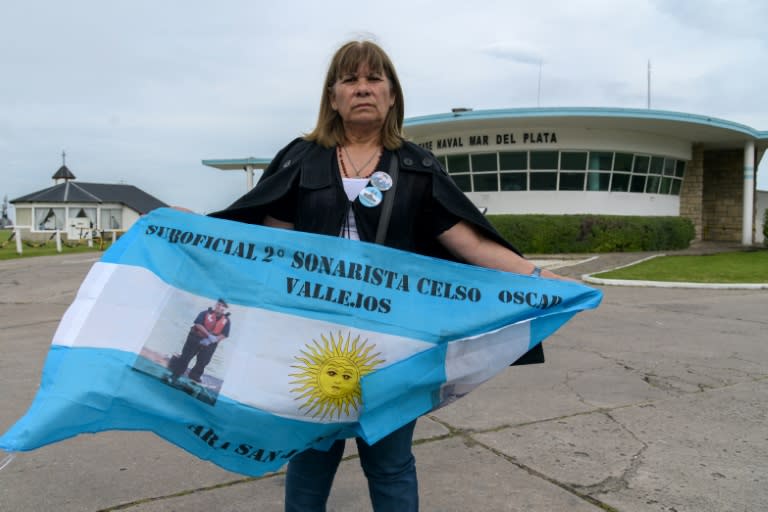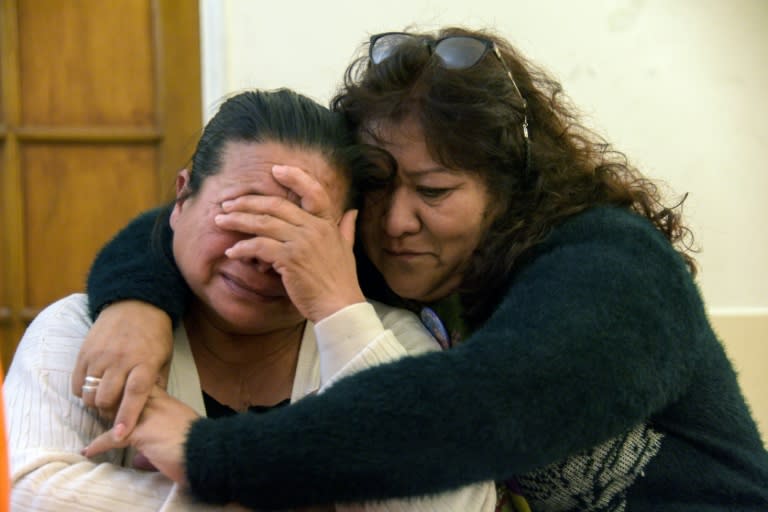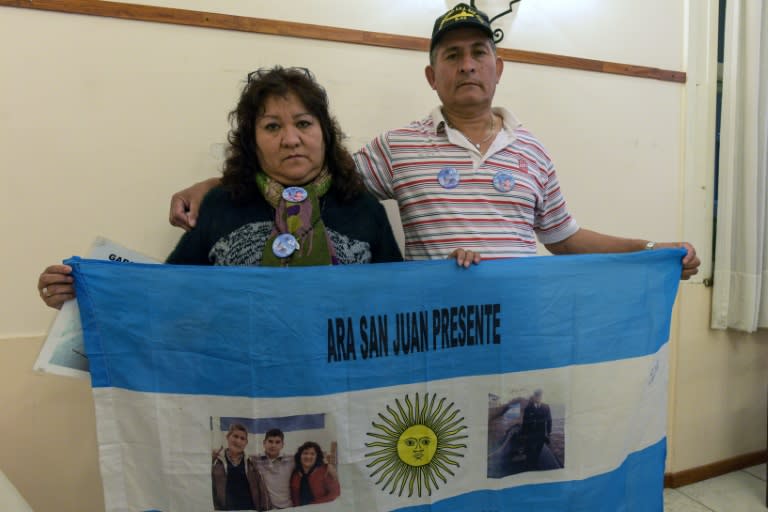A year on, families grieve for Argentina's missing submariners
Yolanda Mendiola turns up every morning to join other grieving mothers in a forlorn protest at the home base of a missing Argentine submarine. Thursday's will be harder, marking a year since the last communication was received from the sub before it vanished into the depths of the Atlantic with a crew of 44. "Our families have been destroyed" says the 55-year-old. Mendiola shows up at the Mar del Plata base because, like the others, she has nowhere else to go. "We cannot go to our homes. We go to the base every day -- morning and evening. We need to see the bodies of our children, have them as best we can," says Mendiola. She is one of several women who have been living for the past 12 months in a military hotel near the base, nearly 2,000 kilometers (1,200 miles) from her home in the northern city of Jujuy. She is still waiting to find out what happened to Petty Officer Leandro Cisneros, her 28-year-old son. - Last contact - The navy lost contact with the submarine on November 15, some 450 kilometers from the Argentine coast. It was on its way back to base from Ushuaia at the southern tip of Argentina. A massive air and sea search began 48 hours later involving units from 13 countries, but the majority withdrew before the end of 2017, as the wintry South Atlantic refused to give up its secrets. The navy has been fiercely criticized for its handling of the operation since first reporting the submarine overdue at Mar del Plata on November 16. It was only several days into the tragedy that navy officials acknowledged the old, German-built submarine had reported a problem with its batteries in its final communication on November 15. And nearly 10 days later, the navy confirmed there had been an explosion on board, which experts said was likely linked to the battery problem. Several senior officers were dismissed, including navy chief Marcelo Srur. The navy has a poor reputation in Argentina. During the 1976-1983 military dictatorship, some navy facilities, like the one at Mar del Plata, served as detention and torture centers, and an estimated 30,000 people disappeared. Authorities have opened a criminal investigation on orders from a judge in the city of Caleta Olivia, a port in Patagonia where maritime cases are usually heard. The judge has so far heard testimony from 70 people but says she is no closer to knowing what happened. Families of the missing crew have kept up pressure on the government not to give up on the search, staging protest marches and camping out in front of the local assembly. More than 25 million dollars has been spent on the search, defense ministry official Graciela Villata told a congressional committee this week. - Still believing - Some of the mothers still hope that the sub had another destination other than the bottom of the ocean and that, fanciful as it may seem, the crew is still alive. "It's coming up to a year now. And we will be there waiting for him to come back," said Zulma Sandoval, 56, mother of 39-year-old submariner Celso Vallejos. "It would be a huge miracle if the submarine showed up and we saw them return, because truthfully, nobody knows what happened," she said. Far from her house in the northern city of Santiago del Estero, a tearful Lourdes Melian, 21 continues a lonely vigil with other relatives in Mar del Plata. "I feel that my brother is no longer here," she says of officer David Melian, 32. "I prefer that to thinking he's still there, or that they have been kidnapped." The loss of the San Juan is the first major tragedy to hit the navy since the Falklands War in 1982. Argentina, which refers to the islands as Las Malvinas, lost the war to Britain. Some crew members had told their families they had been shadowed on previous trips by British ships. That has led some family members to believe the sub may have been in the exclusion zone around the still-disputed islands. "I dream of my husband. I asked him where he was and he told me he was in the Malvinas and that he couldn't talk," Andrea Mereles told AFP. In those dreams, she says her husband tells her: "What I told you about what happened us in the previous trip -- that we were followed by a British submarine -- the same thing happened again." Where the submarine disappeared, on the edge of the Argentine shelf, depths plummet from 200 meters (650 feet) to more than 3,000 meters. Experts say the sub would have been crushed by water pressure once it dropped below about 600 meters.





